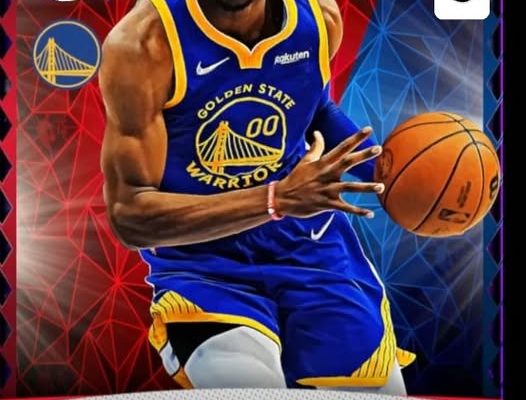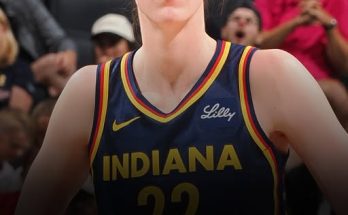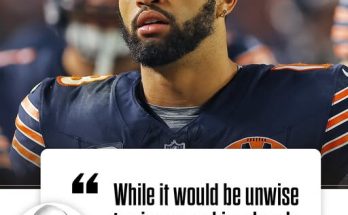The Golden State Warriors find themselves at a crossroads in the current NBA offseason, and at the center of the storm is forward Jonathan Kuminga, a talented but polarizing young player whose future with the franchise remains murky. For weeks, speculation has swirled about whether Kuminga will remain in San Francisco or be moved in a sign-and-trade deal. As the days turn into weeks and the free agency market continues to dry up, the likelihood of a reunion between Kuminga and the Warriors seems to be increasing, even though both sides may not be thrilled about the prospect. It’s a complicated, layered scenario shaped by financial realities, organizational priorities, and the evolving state of the NBA market.
Kuminga’s situation isn’t straightforward. He is reportedly seeking a lucrative contract in the range of $30 million per year, a figure that would place him in the tier of young stars who are either franchise cornerstones or key secondary options on contending teams. However, the Warriors, who are already pressed against the luxury tax line and navigating one of the most expensive payrolls in NBA history, appear unwilling to meet those demands. According to multiple reports, Golden State’s front office is aiming for a smaller deal in the $20 million range, which they could potentially leverage in a trade if the right opportunity arises. This difference in valuation has created a significant standoff, and as suitors back away, Kuminga’s camp is feeling the squeeze of a cooling market.
The Warriors’ executive team, led by General Manager Mike Dunleavy Jr. and heavily influenced by franchise legend and consultant Joe Lacob, has given Kuminga’s camp a reality check, signaling that the team will not overspend to keep him if his demands remain unreasonable. Their approach is pragmatic, rooted in both financial discipline and a long-term vision for the team’s future. With the core trio of Stephen Curry, Klay Thompson, and Draymond Green all entering the twilight of their careers, the Warriors face a delicate balancing act between competing for championships now and planning for a future that doesn’t rely so heavily on aging stars. Kuminga, at 21 years old, is supposed to be part of that future—but only at the right price.
The standoff between Kuminga and the Warriors highlights broader trends in the NBA regarding the valuation of young talent. In recent years, we’ve seen teams willing to offer significant contracts to promising players who have yet to fully prove themselves, betting on their upside rather than their current production. However, Golden State’s hesitation suggests a more cautious approach. The team recognizes Kuminga’s potential—he has shown flashes of brilliance as a versatile, athletic forward who can defend multiple positions and score in transition—but they also see his inconsistencies. Kuminga has yet to develop into a reliable offensive threat in half-court sets, and his shooting remains streaky at best. These limitations make the Warriors hesitant to commit $30 million annually to a player who might not yet be a top-three option on a championship-level team.
The Warriors’ financial picture adds another layer of complexity. Golden State is one of the few franchises that has consistently paid deep into the luxury tax, thanks to their championship success and the willingness of ownership to spend big. However, with new collective bargaining agreement rules designed to penalize high-spending teams more severely, the Warriors must tread carefully. Committing $30 million per year to Kuminga would not only affect their flexibility to build around Curry but would also trigger massive tax penalties that could limit their ability to add depth to the roster. From a purely financial standpoint, offering Kuminga a deal at his desired number might be seen as reckless, particularly if they believe they can find comparable production for less money.
Another key factor in this saga is the trade market, or rather, the lack of one. At the start of free agency, several teams were rumored to have interest in Kuminga, including the Orlando Magic, Detroit Pistons, and San Antonio Spurs. These teams, armed with cap space and a need for young talent, seemed like potential landing spots for Kuminga. However, as the offseason progressed, these suitors either addressed their needs through other moves or decided that Kuminga’s asking price and potential trade cost were too steep. Without a robust market, the Warriors’ leverage has increased, allowing them to hold firm on their valuation.
From Kuminga’s perspective, the situation is understandably frustrating. Drafted seventh overall in 2021, he came into the league with sky-high expectations as a raw but explosive athlete with the tools to become a star. Over the past three seasons, he has had to navigate limited playing time and a role that has fluctuated depending on the team’s needs. Under Steve Kerr, the Warriors have often prioritized veterans in their rotation, leaving Kuminga on the outside looking in during critical playoff moments. Despite these challenges, he has made steady progress, improving his defense and finishing ability around the rim. Yet, he likely feels that he has outgrown his current role and deserves both a larger platform and a contract that reflects his potential.
This disconnect between Kuminga’s self-perception and the Warriors’ evaluation is at the heart of the current standoff. Kuminga believes he is worth $30 million per year—a salary range typically reserved for established starters or rising stars—while the Warriors view him as a promising but unproven asset who is worth closer to $20 million. The $10 million gap may not seem insurmountable, but in the context of the NBA’s salary cap and luxury tax, it’s a significant difference.
To fully understand the dynamics at play, it’s worth looking back at how the Warriors have managed similar situations in the past. Golden State has a history of being both loyal to its players and ruthless when necessary. For example, they famously allowed Kevin Durant to leave in free agency when they realized retaining him was no longer feasible, and they did not hesitate to trade young talent like James Wiseman when it became clear he wasn’t a good fit for their championship window. With Kuminga, the Warriors are trying to strike a balance between maximizing his trade value and not overpaying for potential that may never fully materialize.
The Warriors’ coaching staff, particularly head coach Steve Kerr, has also played a role in shaping Kuminga’s future with the team. Kerr has praised Kuminga’s athleticism and defensive versatility but has also been critical of his decision-making and ability to adapt to the team’s complex offensive system. The Warriors’ style of play, which emphasizes ball movement, spacing, and high basketball IQ, can be challenging for young players who are used to dominating the ball. Kuminga has had to adjust to a system that doesn’t always cater to his strengths, and this has sometimes led to frustration on both sides.
As the offseason drags on, the question becomes: what are the Warriors’ real options? If no sign-and-trade partner emerges, they could offer Kuminga a qualifying offer and bring him back on a short-term deal, betting that he will either improve his value during the season or become a more attractive trade asset at the deadline. This would allow the Warriors to maintain flexibility while avoiding a long-term commitment. However, this option risks creating tension in the locker room if Kuminga feels undervalued or underutilized.
Another possibility is that the Warriors simply let the market dictate Kuminga’s value. If no team is willing to offer him $30 million per year, he may have to accept a smaller deal closer to the Warriors’ $20 million range. This outcome would represent a win for Golden State, as they would retain a promising young player at a manageable price while keeping their financial options open.
It’s also worth considering the broader implications of Kuminga’s contract negotiations for the Warriors’ future. With Curry still playing at an elite level, the team is in win-now mode, but they also need to start planning for life after the dynasty era. Kuminga, along with players like Moses Moody and Brandin Podziemski, represents the next generation of Warriors basketball. If they mishandle Kuminga’s situation, it could send a negative message to other young players and potentially hinder their ability to transition smoothly into the next phase of the franchise.
From a league-wide perspective, Kuminga’s contract dispute is part of a larger conversation about the value of young, athletic forwards in today’s NBA. Players with Kuminga’s physical tools—length, speed, and defensive versatility—are highly coveted, but teams are becoming increasingly cautious about overpaying for potential. The new collective bargaining agreement has created an environment where financial discipline is more important than ever, and teams must carefully weigh the risks and rewards of handing out large contracts.
In analyzing Kuminga’s on-court impact, it’s clear that he brings a unique skill set to the Warriors. His ability to guard multiple positions makes him a valuable asset in switch-heavy defensive schemes, and his explosiveness in transition adds a dimension to the Warriors’ offense that few other players can provide. However, his half-court offense remains a work in progress, and his three-point shooting has yet to reach a level where defenses consistently respect him on the perimeter. These limitations raise questions about whether he can be a primary or secondary scoring option on a contending team, which in turn affects his value in contract negotiations.
The Warriors’ executive team is also mindful of the team’s long-term salary structure. With Curry earning over $50 million annually and Thompson and Green also on significant deals, adding another $30 million contract could severely limit the team’s flexibility. In a league where depth and versatility are increasingly important, tying up that much money in a player who is still developing may not be the wisest move. This is why the Warriors are reportedly aiming for a contract in the $20 million range, which would give them more room to maneuver while still rewarding Kuminga for his contributions.
For fans of the Warriors, the uncertainty surrounding Kuminga’s future is both intriguing and frustrating. On one hand, they recognize his potential and want to see him flourish in Golden State’s system. On the other hand, they understand the financial and strategic challenges the team faces. The situation has sparked debates among fans and analysts alike about whether the Warriors should prioritize retaining Kuminga or use him as a trade chip to acquire a more established player who can help them win now.
As the offseason progresses, the narrative around Kuminga will continue to evolve. If he ultimately signs a deal with the Warriors, the focus will shift to whether he can take the next step in his development and justify the team’s investment. If he is traded, the conversation will center on whether Golden State received fair value in return and how his departure impacts the team’s future.
Kuminga’s camp, meanwhile, is likely exploring all options to create leverage in negotiations. This could include meeting with other teams, gauging interest in potential sign-and-trade scenarios, or even considering a short-term deal that allows him to hit free agency again in a year or two with the opportunity to command a larger contract if his performance improves. However, without a robust market for his services, their negotiating power is limited.
The Warriors’ stance on Kuminga also reflects their broader philosophy when it comes to team-building. Golden State has always prioritized fit and culture over pure talent. While Kuminga has the athletic tools to succeed, the question is whether he can fully integrate into the Warriors’ system and embrace the team-first mentality that has been the hallmark of their success. If the front office has doubts about his ability to do so, they may be more inclined to move on rather than commit significant resources to him.
Looking ahead, the outcome of the Kuminga saga could have ripple effects throughout the league. Other teams are watching closely to see how Golden State handles the situation, as it could influence the market for other young players in similar positions. If the Warriors are able to secure Kuminga on a team-friendly deal, it could set a precedent for how teams negotiate with promising but unproven talent. Conversely, if Kuminga secures a deal closer to his asking price, it could embolden other young players to hold out for larger contracts.
The Warriors’ executive team, led by Dunleavy Jr., has been deliberate and patient in their approach this offseason. They understand that the stakes are high, not just for this season but for the future trajectory of the franchise. With Curry still in his prime but nearing the end of his career, every decision they make will be scrutinized. The handling of Kuminga’s contract is just one piece of the puzzle, but it’s a piece that could have significant implications for the team’s competitiveness in the years to come.
The relationship between Kuminga and the Warriors has also come under scrutiny. While there is no indication of a major rift, there have been reports of frustration on both sides. Kuminga has publicly expressed his desire for a larger role, and the Warriors have privately questioned whether he has the maturity and basketball IQ to fully thrive in their system. This tension is not uncommon in player-team relationships, especially when both parties have different visions of the future. However, how they navigate this period of uncertainty could determine whether Kuminga remains a key part of the Warriors’ plans or becomes the latest young talent to be traded away.
The broader NBA landscape also plays a role in Kuminga’s situation. With several teams focused on developing their own young stars or saving cap space for future free agent classes, there are fewer teams willing to take a big swing on a player like Kuminga. This lack of demand has worked in the Warriors’ favor, giving them the leverage to hold firm on their valuation. However, all it takes is one team to change the dynamics of the market, and the Warriors must remain vigilant in monitoring potential opportunities.
For Kuminga, the path forward is clear: he needs to continue improving his game and proving that he can be a consistent contributor on both ends of the floor. If he can elevate his shooting, improve his decision-making, and demonstrate a willingness to embrace his role, he will not only earn a larger contract but also solidify his place in the Warriors’ long-term plans. Until then, the standoff over his contract will continue to loom over the offseason.



